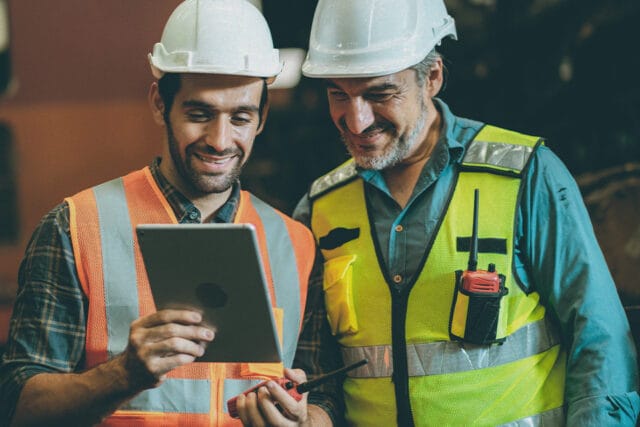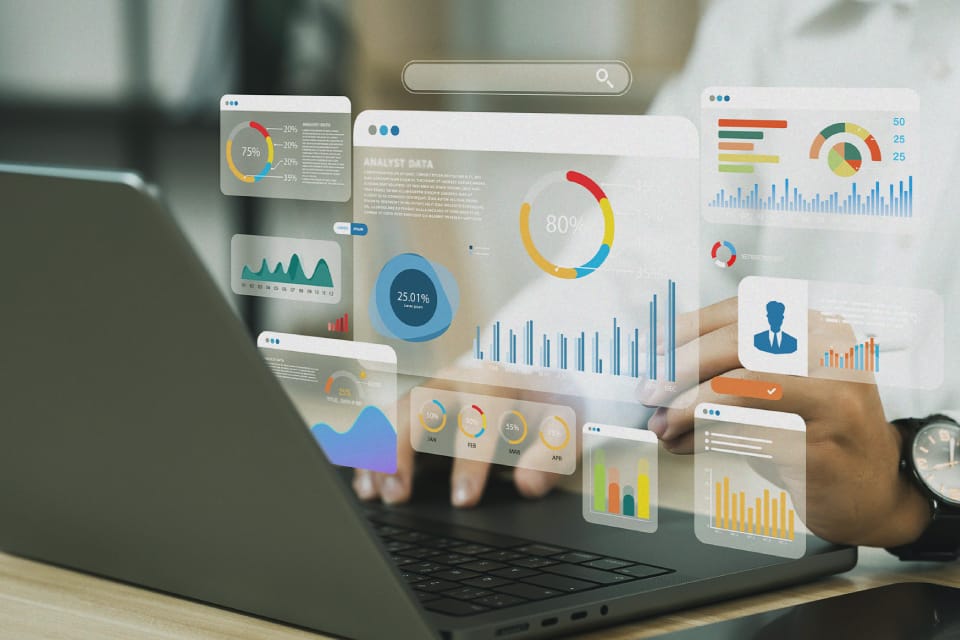
AI in the Workplace: 5 Ways to Increase Safety

Artificial Intelligence (AI) is an ecosystem of different technologies working together to enable computer systems to predict, learn, and understand with human-like levels of intelligence and beyond. Even though the term AI has only become a household name in the past few years, it has been around for decades. And it continues to quickly evolve.
AI in the workplace is now standard for most companies. Cybersecurity AI tools help detect security threats, analyze network traffic, and flag potential breaches. Many companies leverage AI platforms for recruiting efforts, sifting through resumes, and identifying top candidates. In high-hazard industries, AI in the workplace can play a big role in risk mitigation and management.
This article explores five ways your company can leverage AI technology to increase safety, ensure compliance, prevent accidents, and protect your workers.
Take Risk Mitigation to the Next Level with AI in the Workplace
1. Predictive Analytics
Capturing lagging indicators, such as TRIR, will always be a function on the job site and a priority for any construction company. But what if your construction safety software made it easier to capture leading indicators? The best software platforms have predictive capabilities built right into the system. This gives you the ability to help prevent incidents and accidents, rather than track them after the fact.
2. Hazard Identification
AI tools add an extra layer of prevention when it comes to identifying hazards on the job site. AI algorithms can analyze large amounts of data to identify potential hazards and risks. This allows companies to take proactive measures to prevent incidents. AI also uses data to help predict maintenance and automated inspection.
3. Employee Monitoring
Wearable technology, such as heat monitors, PPE sensors, and fatigue detection devices protect employees from harm. Smart devices like connected wristbands and helmets enable companies to be more proactive in their safety processes by monitoring various health metrics to detect warning signs that employees and management should be aware of, such as:
- Heart rate
- Heat stress
- Physical exertion
4. Protect Workers in Unsafe Environments
Another advantage of AI in the workplace is having machines do some of the most dangerous work. Machines will never replace workers in high-hazard jobs, but they can help in reducing risks. For example, in mining, AI-powered machines, such as autonomous vehicles, go into dangerous spaces first to ensure the environment is safe for workers. In other industries, such as oil and gas, AI is used for air quality monitoring and can alert workers before it becomes toxic.
5. Employee Training
Regular training and skills development are essential in high-hazard industries. Innovation is the key to effective training. As younger generations enter the workforce, companies must get creative when it comes to offering engaging training programs. AI virtual reality technology has transformed the way workers learn how to do their jobs. It allows employees to learn and practice safety procedures in high-risk environments without being exposed to real-life risks. Simulations are much more effective than manuals and binders.
The Right Partner Will Help You Implement AI in the Workplace
The use of AI in the workplace for high-hazard industries is aimed at creating safer job sites by leveraging advanced technologies to identify and mitigate potential risks. Ultimately, this improves safety procedures and establishes a positive culture around employee well-being.
Allow Veriforce to help you harness the power of AI tools. Your investment in safety technology demonstrates your dedication to innovation, efficient processes, and worker safety.
Contact us today to learn more.




